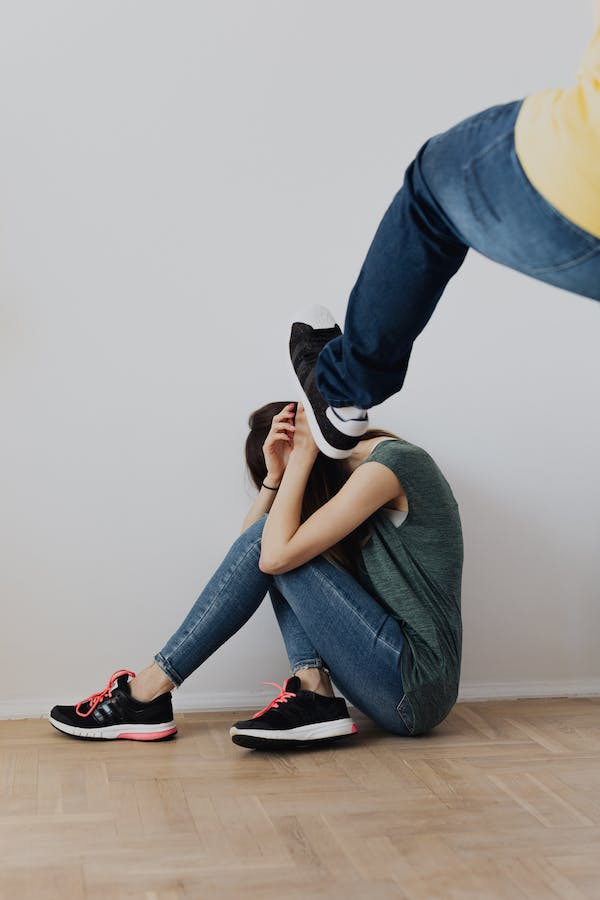
Have you ever contemplated the intricate layers of physical aggression?
While it stands as a recognized aspect of human behavior, its depths go beyond what meets the eye.
In this comprehensive exploration, we will embark on a profound journey into the realm of physical aggression.
Our path will unveil its diverse facets, unearth its underlying causes, illuminate the means to identify warning signs, and, above all, provide invaluable insights into effective prevention strategies.
Prepare for an enlightening voyage as we navigate the complexities of this compelling topic.
What is Physical Aggression?
To commence our journey of exploration, it’s imperative to establish a clear comprehension of what physical aggression entails.
At its core, physical aggression constitutes the purposeful utilization of force to inflict harm or damage upon another person or their property.
It resembles an impending tempest brewing within an individual, culminating in actions that have the potential to cause physical injury or harm to possessions.
In simpler terms, physical aggression encompasses a recurrent pattern of conduct wherein an individual resorts to physical force as a means of expressing their emotions, frequently resulting in harm or injury to others or their belongings.
This manifestation of aggression can take on a variety of forms, ranging from acts as straightforward as pushing or hitting to more severe instances of violence.
Types of Physical Aggression
Direct physical aggression
This form of physical aggression is perhaps the most commonly envisioned.
It involves individuals resorting to direct physical force to inflict harm upon another person.
Actions like punching, shoving, or striking fall under this category.
It’s the visible, immediate use of physical power to cause harm or injury.
Indirect Physical Aggression
Sometimes, physical aggression takes a subtler and sneakier path.
Indirect physical aggression entails individuals expressing their hostility by targeting the possessions or property of another person.
This can manifest in actions such as breaking windows, keying cars, or causing damage to valuable items.

Impulsive versus Premeditated Physical Aggression
As we delve deeper into the realm of physical aggression, we encounter a fascinating dimension: the differentiation between impulsive and premeditated physical aggression.
These distinctions offer valuable insights into the intricate nature of aggressive behaviors
Impulsive physical aggression
Impulsive physical aggression is akin to a sudden lightning strike in the world of human behavior.
It occurs when an individual reacts in a swift and intense manner without much forethought or planning.
This type of aggression is often triggered by powerful and overwhelming emotions that momentarily overpower one’s rational judgment.
Premeditated physical aggression
In contrast, premeditated physical aggression is a calculated and deliberate form of aggression.
It’s akin to a chess game where moves are carefully thought out in advance.
Individuals resorting to premeditated physical aggression plan their actions with a clear intent to harm or injure another person.
Causes of Physical Aggression
Now, what sets the stage for physical aggression?
There’s no one-size-fits-all answer, as it’s often a mix of factors. It’s like a recipe, with various ingredients:
Stress
Stress operates much like a pressure cooker in the realm of life.
As it gradually builds up, it can culminate in explosive moments.
When individuals find themselves confronted with overwhelming stressors stemming from work, personal life, or other sources, their coping mechanisms can become severely strained.
In these circumstances, physical aggression can emerge as a means of releasing pent-up tension and frustration.
Frustration
Frustration, often likened to shaking a soda can, occurs when individuals do not attain what they desire or expect.
Just as the built-up pressure in the can results in an explosion when the top is popped, unresolved frustrations can lead to aggressive outbursts.
Understanding the role of frustration in physical aggression is crucial, as it reflects the dynamic relationship between unmet needs and aggressive behavior.
Learned behavior
Sometimes, individuals resort to physical aggression because they’ve observed it in their environment.
This is akin to learning a behavior by watching others.
When aggression is modeled or normalized in one’s surroundings, it can become a learned response to conflicts or challenges.
This highlights the significant influence of one’s social environment on the development of aggressive behaviors.
Biological factors
Biological factors, such as genetics and brain chemistry, play a pivotal role in predisposing certain individuals to a heightened propensity for aggression.
Specific genetic predispositions and imbalances in brain chemistry can substantially influence an individual’s ability to control impulses and regulate their emotions, thereby rendering them more susceptible to engaging in aggressive behaviors.
Psychological factors
The domain of psychological factors spans a wide spectrum, including experiences of trauma, abuse, or mental health issues.
Individuals who have undergone traumatic events or endured abuse may exhibit an elevated vulnerability to physical aggression.
Furthermore, those grappling with mental health challenges, such as difficulties in anger management or impulse control disorders, may demonstrate an increased predisposition to engaging in acts of aggression.
Social factors
The social milieu holds a pivotal role in shaping the landscape of physical aggression.
Factors such as poverty, exposure to domestic or community violence, and the presence of aggressive role models can exert a significant influence on the development of aggressive behaviors.
Individuals raised in environments marked by violence or societal upheaval may internalize aggression as a means of survival or asserting dominance.

Signs of Physical Aggression
Spotting the signs of physical aggression can be crucial. It’s like seeing dark clouds gather before a storm. Keep an eye out for:
- Angry outbursts: Frequent bursts of anger that result in aggressive actions.
- Intimidation: Making threats or using body language to scare someone.
- Property damage: Destroying or damaging things that don’t belong to them.
- Impulsiveness: People who act without thinking may be more likely to be physically aggressive.
- Substance abuse: Alcohol and drugs can lower inhibitions and increase the risk of physical aggression.
- Control issues: Individuals prone to physical aggression often display a strong need for control.
- Escalating tensions: Before a physical outburst, tensions and conflicts may escalate.
- Frequent blame: People inclined toward physical aggression may habitually shift blame onto others.
- Isolation: Social withdrawal or isolating oneself from friends and family can be an indicator of underlying issues that may lead to physical aggression.
- Unpredictable behavior: Physical aggression can often manifest as unpredictable or erratic behavior.
Consequences of Physical Aggression
The aftermath of physical aggression can be like ripples in a pond – it affects more than just the surface. Consequences may include:
- Physical harm: Injuries to the victim and sometimes the aggressor.
- Legal trouble: It can lead to criminal charges and legal consequences.
- Damaged relationships: Strained or broken relationships with friends and family.
- Emotional Trauma: Physical aggression often inflicts emotional scars, not only on the victim but also on the aggressor.
- Economic consequences: Legal troubles resulting from physical aggression can lead to financial burdens.
- Damage to reputation: Engaging in physical aggression can tarnish one’s reputation in the community and workplace.
- Increased risk of retaliation: Physical aggression can escalate conflicts, increasing the risk of retaliation from the victim or others seeking justice.
Preventing Physical Aggression

Now, let’s focus on the silver lining – preventing physical aggression. It’s like turning off the storm before it even starts.
Here are some strategies:
Early intervention
Identifying and addressing risk factors for aggression at an early stage, particularly during childhood, can significantly reduce the likelihood of aggressive behavior developing.
Interventions in early childhood, such as parenting programs and educational initiatives, can promote healthy emotional development and conflict resolution skills.
Anger management
Learning how to manage anger and frustration is a transformative skill.
Anger management programs and counseling can provide individuals with effective tools to regulate their emotions and respond to stressors in a non-aggressive manner.
Conflict resolution
Teaching individuals alternative, non-violent methods for resolving conflicts is essential.
Conflict resolution training helps individuals develop communication and negotiation skills, enabling them to address disagreements and disputes in a peaceful and productive way.
Positive role models
Surrounding oneself with positive role models and mentors who exemplify non-aggressive behavior can have a profound impact.
Positive influences provide guidance and support for individuals seeking to break the cycle of aggression.
Social skills training
Programs that focus on teaching individuals how to communicate and interact positively with others can significantly reduce aggression.
These programs emphasize empathy, active listening, and effective communication as essential components of successful social interactions.
Creating a safe environment
Reducing exposure to violence and fostering a safe, supportive environment is paramount in preventing physical aggression.
Communities, schools, and families play a pivotal role in creating such environments.
This includes implementing anti-bullying policies, addressing domestic violence, and promoting conflict resolution programs.
Mental health support
Recognizing and addressing underlying mental health issues is critical.
Individuals struggling with conditions such as depression, anxiety, or trauma may be more prone to aggression.
Access to mental health services and support can help address these issues and reduce the risk of aggressive behavior.
Parenting education
Providing parents and caregivers with education and support in effective parenting techniques is essential.
This empowers parents to create a nurturing, non-violent environment for their children, thereby reducing the likelihood of aggression in the home.
Community programs
Community-based programs that offer positive activities and engagement opportunities for individuals, particularly youth, can be effective in redirecting energy toward constructive outlets and away from aggression.
Conclusion
In the realm of human behavior, physical aggression is akin to a multifaceted puzzle, where various elements interconnect.
It encompasses diverse types, spans the spectrum from impulsive to premeditated actions, and has a web of intricate causes and consequences.
Within this intricate framework, our role is twofold: recognizing the signs that act as warning beacons and actively engaging in prevention efforts.
By understanding these dynamics and taking proactive steps, we work toward quelling the tempestuous storm of physical aggression and fostering a more peaceful and harmonious society.
FAQs
Physical aggression can be a one-time occurrence, but it often becomes a pattern if the underlying issues aren’t addressed.
Yes, physical aggression can vary with age. It’s more common in children, and some may outgrow it as they mature. However, in adults, it can have different underlying causes and consequences.
Support and understanding are key. Encourage them to seek professional help if needed and provide a safe space for open communication about their feelings and triggers.



